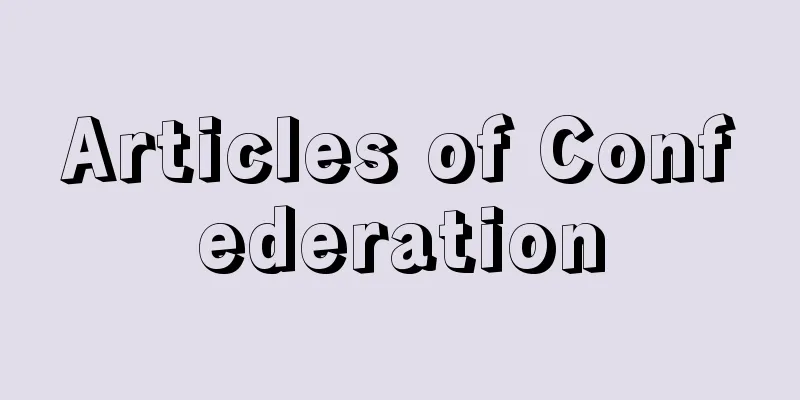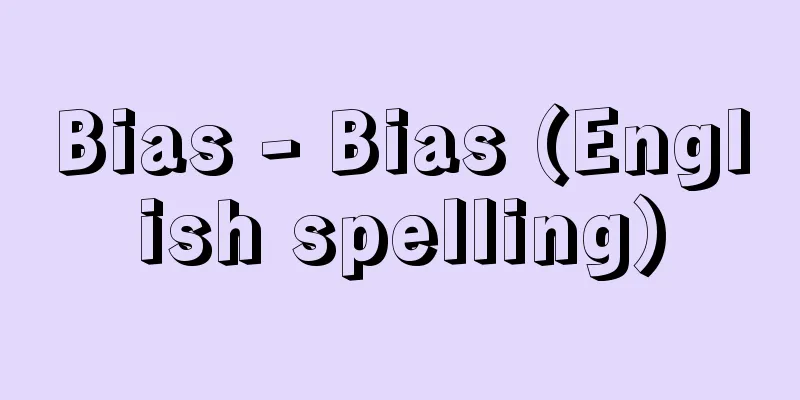Articles of Confederation

|
This was the first written constitution enacted by the 13 American states during the Revolutionary War. It served as the basic law of the new nation, America, for eight years, from March 1781 to March 1789. After the start of the Revolutionary War, the need to codify the rules of the confederation of states was recognized, and in June 1776, a drafting committee was organized with one member from each state, and the draft "Articles of Confederation" was created the following July. However, conflicts arose over such points as whether or not to include the slave population in the allocation of taxes to each state, and whether each state should have one vote in the Confederation Congress as the central government, or whether it should be based on population ratios. In particular, the interests of large and small states clashed over the ownership of the Western Territories, and it took more than three years for the treaty to be ratified by each state and come into effect. As for the claim to the Western Territories, which was the biggest obstacle, large states such as New York and Virginia decided to transfer it to the Confederation Congress, and Maryland, which had resisted until the end, also ratified it in March 1781, and the Articles of Confederation came into effect. The contents of the Convention stipulated that each state would have sovereignty, and that the Confederation Congress would be entrusted with limited administrative powers such as foreign affairs, coinage, postal services, and Indian affairs. A distinctive feature of the Convention was that it prohibited the Confederation Congress from collecting taxes, controlling commerce, and possessing a standing army, which were considered attributes of a nation at the time. Each state had one vote in the Convention, unanimity was required for amendments to the Convention, and contributions were allocated to each state based on their white population. However, the Confederation Congress had no enforcement power, and this, combined with the lack of a judicial system, made it extremely inefficient in terms of actual policy, which led to the establishment of the United States Constitution. [Masashi Shimakawa] Source: Shogakukan Encyclopedia Nipponica About Encyclopedia Nipponica Information | Legend |
|
独立革命期のアメリカ13邦が制定した最初の成文憲法。1781年3月から89年3月の8年間にわたって新国家アメリカの基本法となった。独立戦争の開始後に諸邦連合の規定を成文化する必要が意識され、76年6月に各邦1名の委員によって起草委員会が組織され、翌7月「連合規約」案がつくられた。しかし、税の各邦への割当てに奴隷人口を算入するか否か、また中央政府としての連合会議での投票権を各邦一票とするか人口比とするか、などの点をめぐって対立が生じ、またとくに西方領土の帰属をめぐって大邦と小邦の利害が衝突し、これが各邦で批准されて発効するまでには3年余りを要した。最大の障害であった西方領土の請求権については、ニューヨーク、バージニア等の大邦が連合会議に移譲することを決め、最後まで抵抗していたメリーランドも81年3月に批准し、規約が発効した。 規約の内容は、各邦が主権をもち、連合会議には外交・鋳貨・郵政・インディアン対策などの限定された行政権が委託される、というもので、その特色は、当時の国家の属性とみられた徴税権・通商統制権・常備軍の保有などを連合会議に禁じた点にあった。連合会議での投票権は各邦一票とし、規約改正には全会一致が必要で、分担金は白人人口を基礎に各邦に割り当てられた。しかし連合会議には強制力がなく、司法制度の欠如と相まって実際の施策のうえではきわめて非能率的なものとなり、合衆国憲法の制定へと向かうことになった。 [島川雅史] 出典 小学館 日本大百科全書(ニッポニカ)日本大百科全書(ニッポニカ)について 情報 | 凡例 |
<<: Allied forces - Allied arms; combined forces
>>: Combined Fleet - Rengou Kantai
Recommend
Aizu Highway - Aizu Kaido
This road runs from Sanno Pass on the border betwe...
Yoshishirozuke - Kichomuzuke
...There are many rice paddies in the Kusu Basin,...
Three Sorrows - Three Sorrows
A type of melody in Kabuki music. In particular, i...
Friday Club (Mitsubishi Group)
...The former Mitsubishi Corporation-affiliated c...
Göta Canal - Göta Canal
A canal that crosses southern Sweden, connects Lak...
Edo raw glossy birch ware - Edo raw glossy birch ware
Yellow cover. Published in 1785 (Tenmei 5). Writt...
Merchant Adventurers
A merchant who monopolized the export of woolen fa...
Arisaka Cannon
Type 31 rapid-fire field gun and rapid-fire mounta...
Saburosuke Okada
Western-style painter. Born in Saga Prefecture on...
clavicembalo
…A type of plucked keyboard instrument that was w...
Fukushima [Prefecture] - Fukushima
The southernmost prefecture in the Tohoku region. ...
Iwamuro [Hot Spring] - Iwamuro
Iwamuro Village, Nishikanbara County, Niigata Pref...
Q Stick - Q Stick
…(2) Cue: A stick about 140 cm long used to strik...
Merrill Lynch & Co., Inc.
An American financial conglomerate holding company...
Gray nodule -
…there are two elevations in the medulla oblongat...





![Shirako [town] - Shirako](/upload/images/67cbe54a3453f.webp)



